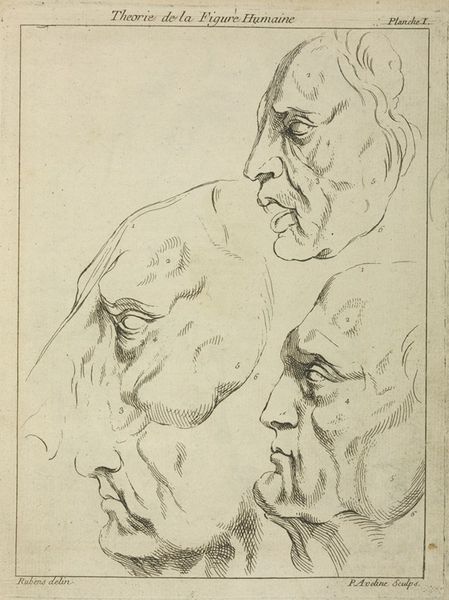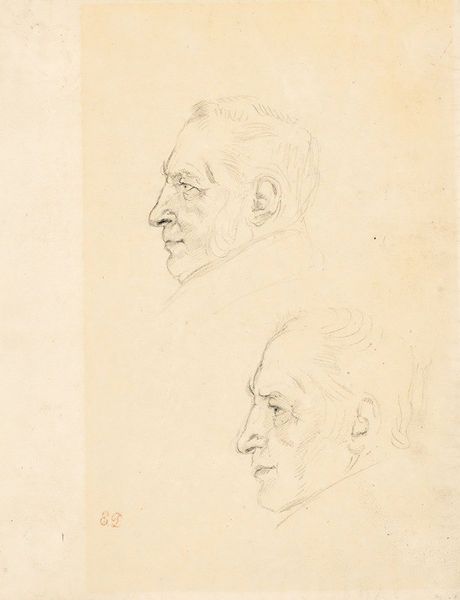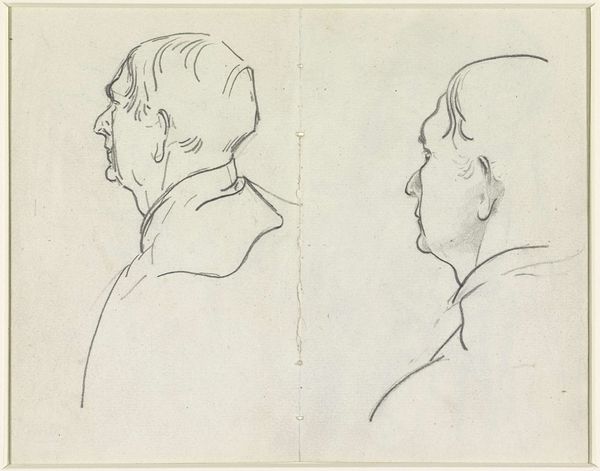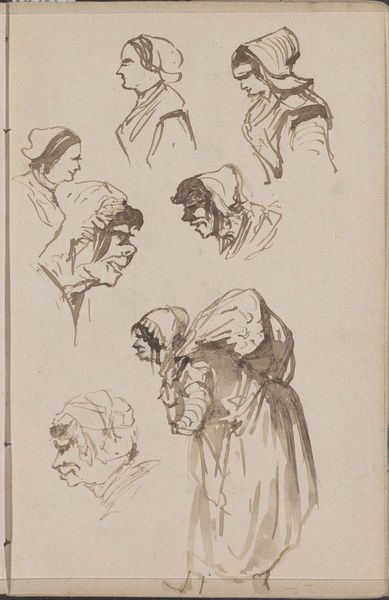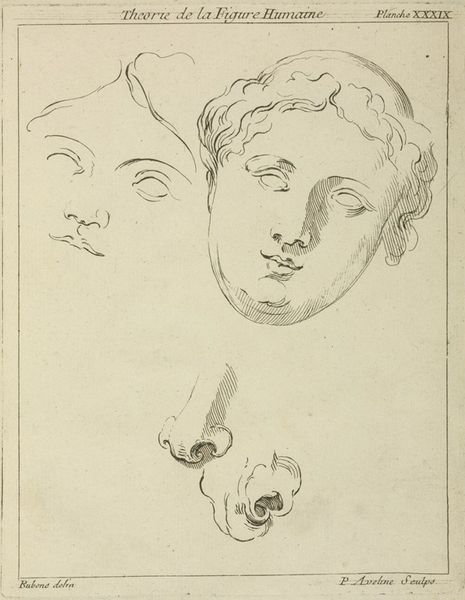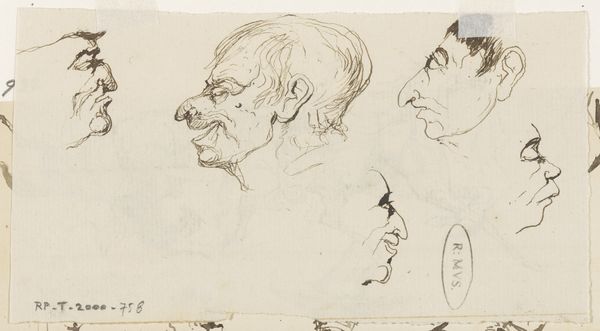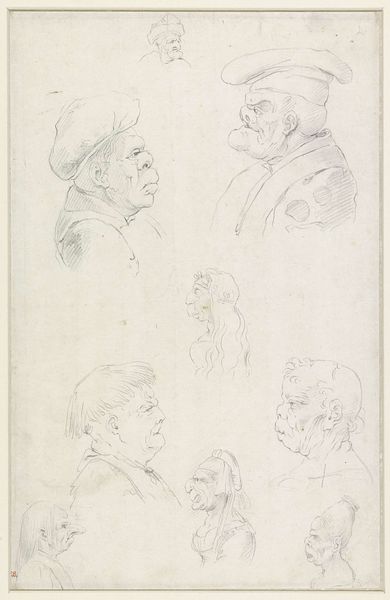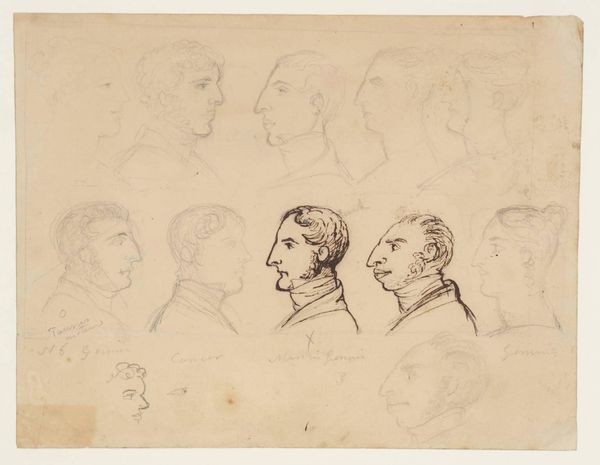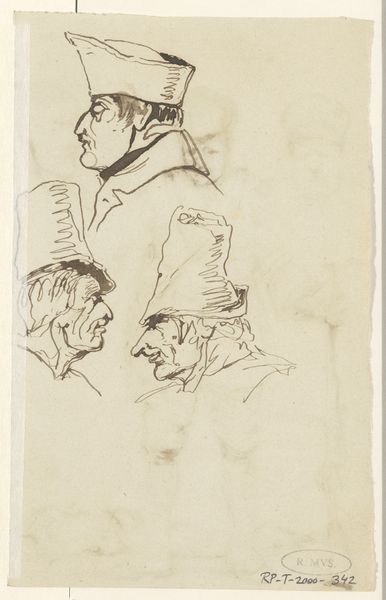
drawing, ink
#
portrait
#
drawing
#
comic strip sketch
#
baroque
#
pencil sketch
#
figuration
#
personal sketchbook
#
ink
#
idea generation sketch
#
sketchwork
#
ink drawing experimentation
#
sketchbook drawing
#
storyboard and sketchbook work
#
sketchbook art
#
initial sketch
Copyright: Public Domain: Artvee
Peter Paul Rubens made these "Three Studies of a Man’s Head and Beard" sometime between 1592 and 1640, likely using a quill pen and brown ink on paper. Here, the material is very simple, but the way it has been applied is not. With deceptively casual strokes, Rubens brings the figures into being through the pressure of his hand. Look closely, and you will notice how certain lines appear darker and more emphatic, while others feather off into almost nothing. This isn’t just a sketch; it’s a carefully choreographed performance, where the artist is using the paper as a stage for his virtuosity. Of course, the paper itself plays a role. Its absorbency allows the ink to bleed slightly, giving the lines a soft, blurred quality. You can imagine Rubens carefully selecting the right type of paper for his purposes, knowing that its texture and weight would influence the final result. So, next time you see a drawing, take a moment to appreciate the humble materials that have been transformed into something so expressive.
Comments
No comments
Be the first to comment and join the conversation on the ultimate creative platform.
